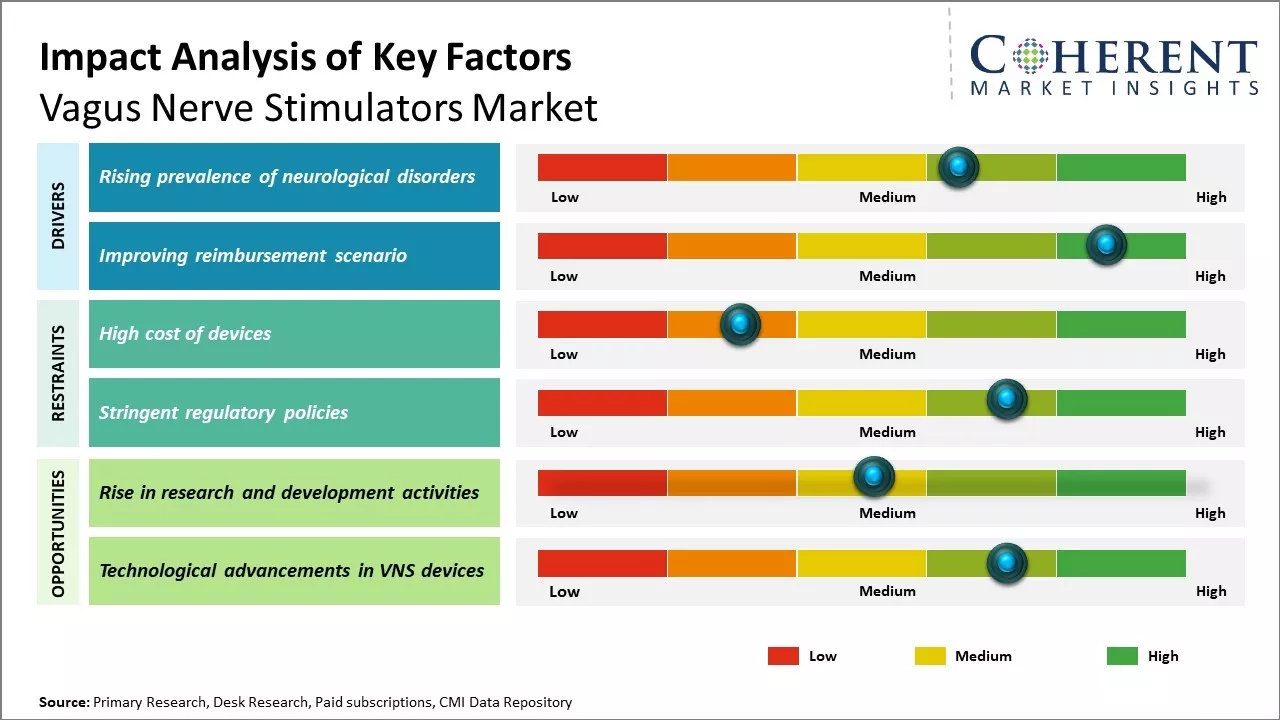The vagus nerve stimulators market is estimated to be valued at USD 667.4 Mn in 2025 and is expected to reach USD 1,293.1 Mn by 2032, growing at a compound annual growth rate (CAGR) of 9.9% from 2025 to 2032.

To learn more about this report, Request sample copy
The market is expected to witness positive growth over the forecast period owing to the increasing prevalence of neurological disorders worldwide. Vagus nerve stimulation therapy has emerged as an effective treatment option for epilepsy and treatment-resistant depression. Further, ongoing technological advancements to develop innovative vagus nerve stimulator devices is also expected to support the market growth. For instance, companies are working on developing rechargeable and miniaturized vagus nerve stimulation devices to improve patient compliance. Thus, growing neurological disorder burden coupled with availability of advanced vagus nerve stimulator devices will collectively support the market expansion through 2032.
Rising prevalence of neurological disorders
The global vagus nerve stimulators market is expected to witness significant growth over the forecast period due to the rising prevalence of neurological disorders across the globe. Neurological disorders like epilepsy, depression, migraine, and Alzheimer's disease are imposing a huge impact on the physical and mental well-being of people as well as on healthcare systems. Vagus nerve stimulation (VNS) has emerged as an effective treatment option for drug-resistant epilepsy and treatment-resistant depression. Studies have shown that VNS is capable of reducing seizure frequency and severity in patients with uncontrolled epilepsy. It has also proven to be an effective therapy for treatment-resistant depression when conventional methods like pharmaceutical drugs fail to provide adequate relief. With increasing life expectancy and aging population globally, the prevalence of neurological conditions like Alzheimer's disease is also rising sharply. According to a World Health Organization (WHO) press release dated March 2023, more than 55 million people worldwide suffer from dementia, with more than 60% living in low- and middle-income nations. Every year, there are roughly 10 million new cases. Dementia is currently the seventh largest cause of death and one of the main causes of impairment and dependency in older people worldwide. The high prevalence of these neurological disorders has been contributing to the growing adoption of VNS therapy. This is likely to drive significant revenue generation opportunities for manufacturers of VNS devices in the future.
Joining thousands of companies around the world committed to making the Excellent Business Solutions.
View All Our Clients